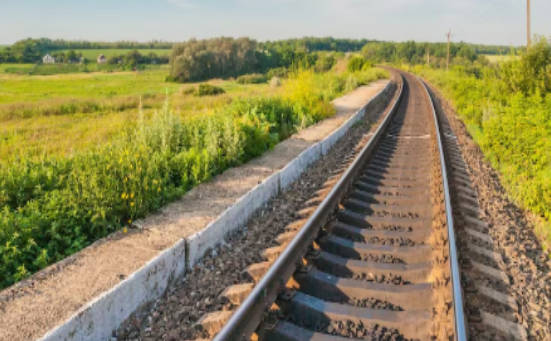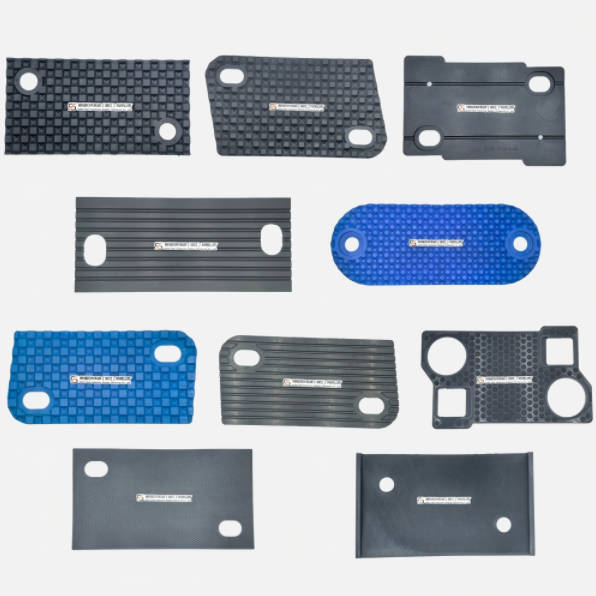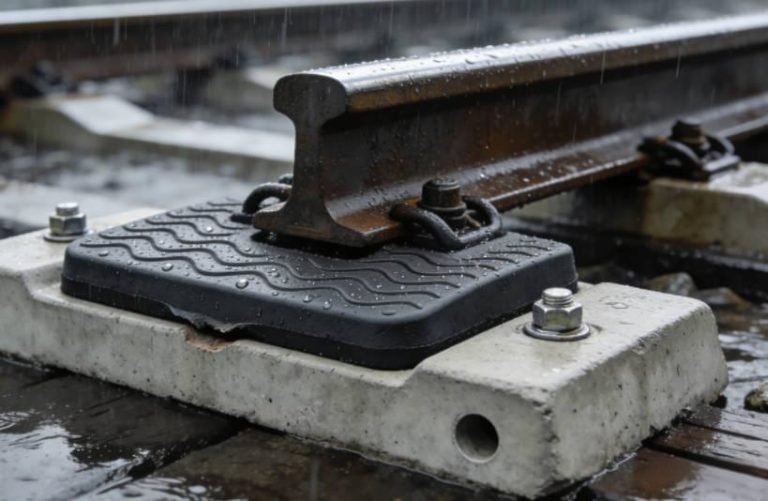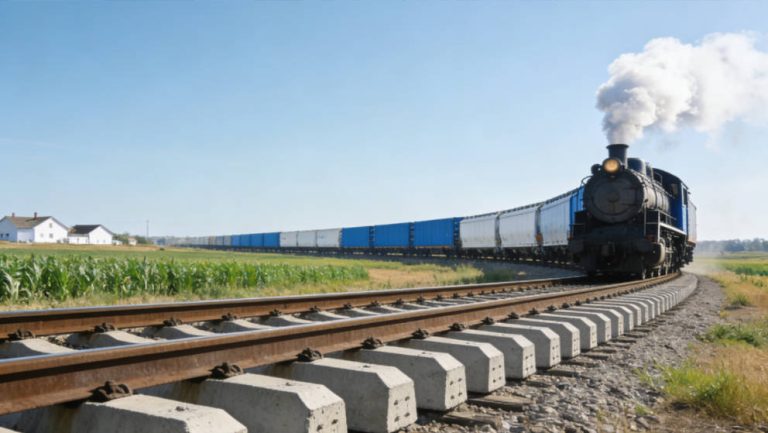Tension Clamps in Railway Systems
Definition of Tension Clamps
Tension clamps are vital components in railway infrastructure, serving as mechanical devices that secure rails to the rail ties or sleepers. These clamps provide the necessary force to maintain the rail in a fixed position, ensuring safe and efficient train operations. The tension clamp is specifically designed to resist the forces generated by the passing trains and environmental conditions, thereby minimizing track displacement and wear.
Importance of Tension Clamps in Railway Infrastructure
The significance of tension clamps in railway systems cannot be overstated. These devices are crucial for maintaining the structural integrity of the track, preventing derailments, and ensuring smooth train operations. Tension clamps contribute to the overall stability of the railway by absorbing and dissipating the dynamic loads imposed by moving trains. Their role in anchoring the rails also reduces maintenance costs and prolongs the lifespan of the rail track, making them indispensable in railway infrastructure.
Key Safety Measures for Using Tension Clamps
Regular Inspection and Maintenance
Frequency of Inspections
Regular inspections of tension clamps are essential to identify potential issues before they escalate into major problems. It is recommended that railway systems conduct inspections at least once every six months. However, the frequency may increase based on the traffic load, environmental conditions, and previous maintenance records. Monitoring the condition of tension clamps frequently ensures early detection of wear and tear, enabling timely replacements and repairs.
Common Issues and How to Address Them
Common issues with tension clamps include corrosion, metal fatigue, and mechanical deformation. These problems can compromise the clamp’s effectiveness and pose significant safety risks. To address these issues, railway maintenance teams should utilize non-destructive testing methods such as ultrasonic or magnetic particle inspection. If corrosion is detected, applying anti-corrosive treatments or replacing the affected clamps is advised. For mechanical deformations, re-tensioning or realigning the clamps may be necessary.
Proper Installation Techniques
Step-by-Step Installation Guide
Proper installation of tension clamps is critical for their effective performance. Begin by cleaning the rail and tie surface to remove any debris or contaminants. Position the tension clamp correctly over the rail and align it according to the manufacturer’s specifications. Use the appropriate tools to apply the required tension force, ensuring that the clamp is firmly in place. Finally, double-check the alignment and tension to confirm that the installation meets safety standards.
Tools and Equipment Needed
The installation of tension clamps requires specialized tools and equipment to ensure precise application. Essential tools include torque wrenches for applying the correct tension force, alignment gauges for checking the positioning, and inspection tools for verifying the installation. Additional equipment might involve hydraulic or manual tensioning devices and safety gear for workers. Utilizing the proper tools not only facilitates accurate installation but also enhances worker safety.
Materials and Manufacturing Standards
Quality Standards for Tension Clamps
Quality standards are paramount when it comes to the manufacturing of tension clamps. Adherence to ISO9001, ISO14001, and ISO45001 ensures that the clamps meet high-quality production and environmental safety norms. These standards guide manufacturers in implementing rigorous quality control measures, from raw material selection to final product inspection. Compliance with these standards guarantees that the tension clamps function reliably under various conditions.
Common Materials Used in Manufacturing
Tension clamps are typically made from high-strength, corrosion-resistant materials such as spring steel or composite alloys. These materials provide the necessary durability and flexibility needed to withstand the dynamic forces exerted by trains. The selection of appropriate materials is crucial for preventing mechanical failure and prolonging the lifespan of the clamps. Manufacturers often conduct extensive material testing to ensure their products meet industry requirements.
Compliance with Industry Regulations
Compliance with industry regulations is a critical aspect of tension clamp manufacturing and usage. Regulatory bodies such as the Federal Railroad Administration (FRA) and the European Union Agency for Railways (ERA) set stringent guidelines for the production, installation, and maintenance of tension clamps. Adhering to these regulations ensures that railway systems operate within safe parameters and reduces the risk of accidents. Manufacturers must stay updated with regulatory changes and incorporate them into their processes.
SAFE Rail Fastening System (Zhejiang) Co., Ltd.
The SAFE Rail Fastening System (Zhejiang) Co., Ltd. (SFFST) operates under stringent quality and management systems, including ISO9001, ISO14001, and ISO45001, which guide its production processes and performance management. Additionally, SFFST implements the “6S” Management System, ERP Management System, and JIT Production Management Method to maintain high standards of production efficiency and quality control.
SFFST’s automatic tension clamp production line exemplifies its technological prowess. This fully automated line handles all stages of production—from cutting and heating to molding, quenching, tempering, surface treatment, antirust treatment, packaging, and warehousing—ensuring precision and consistency in every product.
Moreover, SFFST is dedicated to innovation and the integration of industry, academia, and market needs. Through collaborations with universities, the company transforms cutting-edge research into practical applications, driving the development of specialized, refined, unique, and new products.
Training and Certification for Railway Workers
Required Training Programs
Training programs are crucial for equipping railway workers with the knowledge and skills necessary to handle tension clamps safely and effectively. Workers must undergo comprehensive training that covers the fundamental principles of rail fastening systems, proper installation techniques, inspection procedures, and safety protocols. Hands-on workshops and practical sessions reinforce theoretical knowledge and provide workers with the confidence to conduct installations and maintenance with precision. Continuous education programs and refresher courses are also vital for keeping railway workers updated with the latest advancements and safety practices in tension clamp technology.
Certification Processes for Handling Tension Clamps
Certification processes validate the competence of railway workers in handling tension clamps safely. Accredited institutions typically offer certification courses that encompass both theoretical exams and practical demonstrations. Workers must demonstrate proficiency in installation techniques, maintenance procedures, and safety protocols to obtain certification. Certification not only ensures that workers have the necessary skills but also instills a culture of safety and accountability. It is essential for railway companies to encourage and support their employees in gaining and maintaining these certifications to uphold high safety standards.
Impact of Railway Conditions on Tension Clamp Performance
Climate and Weather Considerations
The performance of tension clamps can be significantly affected by climate and weather conditions. Extreme temperatures, humidity, and precipitation can lead to metal fatigue, corrosion, and mechanical failures. In cold climates, freezing and thawing cycles may cause expansion and contraction, leading to loosening of the tension clamps. Conversely, in hot climates, prolonged exposure to high temperatures can weaken the material integrity. To mitigate these effects, it is vital to use weather-resistant materials and apply protective coatings on the clamps. Regular monitoring and maintenance are also crucial in adapting to changing weather conditions.
Wear and Tear from Daily Use
Tension clamps are subjected to constant stress and dynamic loads due to daily train operations. This ongoing wear and tear can lead to material degradation, loss of tension, and eventual failure of the clamps. Continuous monitoring of the clamps’ condition is essential to identify signs of wear such as bending, cracks, or corrosion. Preventative maintenance measures, like re-tensioning and timely replacement of worn-out clamps, are vital to ensure long-term safety and reliability in railway systems. Implementing robust tracking systems and maintenance logs can facilitate the timely identification and resolution of issues.
Innovations in Tension Clamp Technology
Advanced Designs and Features
Recent advancements in tension clamp technology have introduced new designs and features that enhance performance and safety. Innovations such as self-tensioning clamps, which automatically adjust to maintain optimal tension, are becoming increasingly popular. Other advanced features include corrosion-resistant coatings, improved material compounds for higher durability, and integrated sensors for real-time condition monitoring. These innovations aim to reduce maintenance needs, extend the lifespan of clamps, and improve the overall safety and efficiency of railway operations.
How Innovations Improve Safety
Innovations in tension clamp technology play a crucial role in enhancing safety in railway systems. Self-tensioning clamps, for instance, ensure consistent performance by automatically adjusting to dynamic loads and environmental changes, thereby minimizing the risk of clamp failure. Real-time condition monitoring through integrated sensors enables proactive maintenance, allowing early detection and resolution of potential issues. The use of advanced materials and protective coatings also enhances the durability and reliability of tension clamps, reducing the likelihood of mechanical failures and associated safety risks.
Preventative Measures for Ensuring Long-Term Safety
Scheduled Replacement Intervals
Scheduled replacement of tension clamps at predetermined intervals is a critical preventative measure to ensure long-term safety in railway systems. Based on factors such as material lifespan, environmental conditions, and operational demands, railway companies should establish maintenance schedules that include regular replacement of tension clamps. Implementing a lifecycle management program helps in tracking the age and condition of each clamp, facilitating timely replacements before they reach the end of their effective service life. This proactive approach minimizes the risk of sudden failures and enhances the overall reliability of the rail infrastructure.
Emergency Response Protocols
Developing and implementing robust emergency response protocols is essential for addressing any unforeseen issues involving tension clamps. These protocols should outline the steps to be taken in the event of a tension clamp failure, including immediate inspection, securing the affected area, and notifying relevant authorities. Training railway workers in emergency response procedures ensures they can act quickly and effectively to mitigate risks and restore safe operations. Having a well-defined emergency plan not only ensures swift resolution of issues but also instills confidence among workers and passengers in the railway system’s safety measures.
Summarizing Key Points on Tension Clamp Safety
Ensuring the safety and reliability of tension clamps in railway systems requires a comprehensive approach that includes regular inspection and maintenance, adherence to proper installation techniques, compliance with materials and manufacturing standards, and continuous training and certification of railway workers. Innovations in tension clamp technology further enhance safety by introducing advanced designs and real-time monitoring capabilities. Proactive preventative measures such as scheduled replacements and robust emergency response protocols are crucial for maintaining long-term safety. By integrating these practices, railway companies can ensure that tension clamps consistently perform their critical role in maintaining the structural integrity and safety of rail infrastructure.






